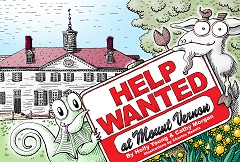Somehow in the past few years, education has moved away from integrating all the content areas focusing instead on teaching each subject in isolation. So many elementary schools that I visit have a dedicated math time followed by an ELA block, etc. Jr. High and High schools do the same thing, so that most children go through their days and years seeing no commonality among the areas of learning that we, as educators, deem important. I know that this new trend is most likely due to the dependence on testing as a means of funding. Most states only test math and ELA, so in response to low test scores, we have to focus on teaching to the skills required for the test. However, by doing this, we are missing out on true learning. We DO need to integrate the contents that we teach, but we just need to keep a critical eye on whether they stay rigorous. Whereas ocean’s week in the past lead to an amazing 3-D hallway display did nothing to further our children’s knowledge about oceans, ecosystems, adaptation, or cause-effect. If you do try to connect your four content areas (Math, Science, Social Studies, and ELA), just make sure you don’t fall into creating crayola curriculum (colorful, but with no real learning attached).
As a secondary teacher myself, I was fortunate to work with a team of teachers that took integrating all of the disciplines seriously. We worked hard to understand each others standards and made sure to design the learning to maximize interdisciplinary connections. Elementary teachers are lucky that they can work to connect all contents throughout the day and not have to depend on other teachers to keep the connections alive. Whatever teaching situation you live in, I highly encourage you to look at ways to bring the four content areas (and any more, if you can) together! One great way to do this is to start the year off with a coordinating theme. My sister (an amazing History teacher) and I designed some lessons using our book, Help Wanted at Mount Vernon, as an anchor text. There is a lesson for math in which you focus on learning the 8 mathematical practices, a lesson for ELA where you examine the rules and norms of your school/classroom using word choice and primary documents, a lesson for Science in which students learn inquiry, observation, and inference skills in order to apply them to engineering, and a history lesson that teaches historical thinking skills for secondary students and primary students.
If you are an elementary teacher, you could read the book once and then use each lesson as a leaping off point to connect the content areas (problem-solving, creative thinking, and inquiry). If you are a secondary teacher and part of a team of content teachers, then you could arrange to read the book at one time (say during advisory or 1st period), and then throughout the day when you see each group of students, you can just focus on your part of the lesson. However, the main focus in all of the classrooms is still problem-solving, creative thinking, and inquiry – a common theme to tie it all together! Whether you are working with a team or by yourself, you can use the essential question – Why is it important to problem-solve, think creatively, and question? All content areas can use this driving question all year no matter what unit or content you are teaching!

 .
.